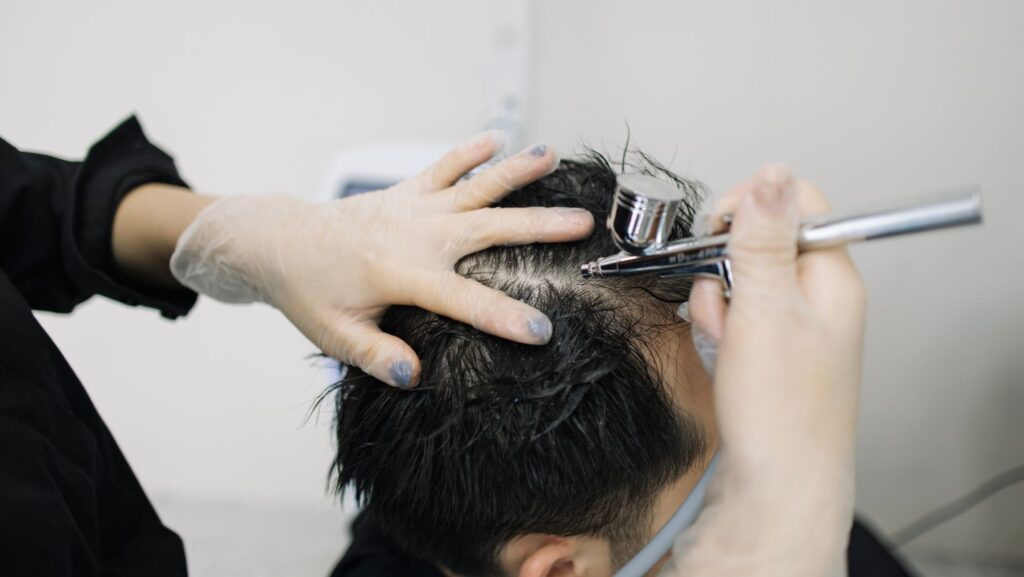Hair loss affects millions of people worldwide. It can be distressing for both men and women. Many seek treatment to restore their hair and boost their confidence.
Several causes of hair loss include genetics, hormonal changes, medical conditions, and certain medications. Stress and poor nutrition can also play a role. Identifying the root cause is key to finding an effective treatment.
Various options exist to address hair loss. Medications like minoxidil and finasteride can help. Some people opt for hair transplant surgery. Others try scalp treatments or lifestyle changes. The best approach depends on the individual’s specific situation and needs.
Understanding Hair Loss
Hair loss can happen for many reasons. It affects both men and women. Learning about hair loss helps people find the right treatment.
Types and Causes of Hair Loss
Male pattern baldness is the most common type of hair loss. It’s caused by genetics and hormones. Women can get a similar condition called female pattern hair loss.
Alopecia areata is when the immune system attacks hair follicles. This causes round bald patches on the scalp or body. Stress, illness, or chemotherapy can cause telogen effluvium. This makes hair fall out all over the scalp.
Some medical conditions lead to hair loss. These include thyroid problems and autoimmune diseases. Certain medications can also cause hair to thin or fall out.
Diagnosing Hair Loss
A doctor or dermatologist can diagnose hair loss. They will ask about medical history and examine the scalp. They may gently pull on hair to see how much comes out.
Blood tests can check for underlying health issues. A scalp biopsy may be done to look at hair follicles under a microscope.

The doctor will look for signs of scalp problems. These might include redness, scaling, or scarring. Skin conditions like eczema or psoriasis can cause hair loss too.
Early diagnosis is key for treatment. Some types of hair loss can be slowed or reversed if caught early.
Treatment Options for Hair Loss
There are several options for hair loss treatment. These include medications, surgical procedures, and supportive therapies. Each option has its own benefits and potential drawbacks.
Medications and Topical Treatments
Minoxidil and finasteride are two common hair loss treatments. Minoxidil is a topical solution or foam applied to the scalp. It can help regrow hair and slow further loss. Finasteride is a pill that blocks DHT, a hormone linked to hair loss.
Rogaine is a brand name for minoxidil. Propecia is a brand name for finasteride. Both are FDA-approved for treating hair loss.
Some doctors may prescribe oral versions of these drugs. Corticosteroids can also help with certain types of hair loss.
Hair Restoration Procedures
Some people opt for hair transplant surgery. It moves hair from areas with more growth to thinning spots.
During the procedure, a surgeon takes small grafts of skin with hair follicles. They then place these grafts in areas with less hair.
Scalp reduction is another surgical option. It removes bald areas of the scalp and stretches hair-bearing skin.
Alternative and Supportive Therapies
Laser therapy uses low-level light to stimulate hair growth. Some find it helpful, but more research is needed.

Wigs and hairpieces offer a non-medical way to cover hair loss. They come in many styles and can look very natural.
Good hair care is key for any treatment plan. This includes gentle washing and avoiding harsh chemicals. For some, treating scalp issues like psoriasis can help with hair growth. For advanced and targeted hair loss treatment in Singapore, options like age-defying therapies are now available to help rejuvenate hair and scalp health.
